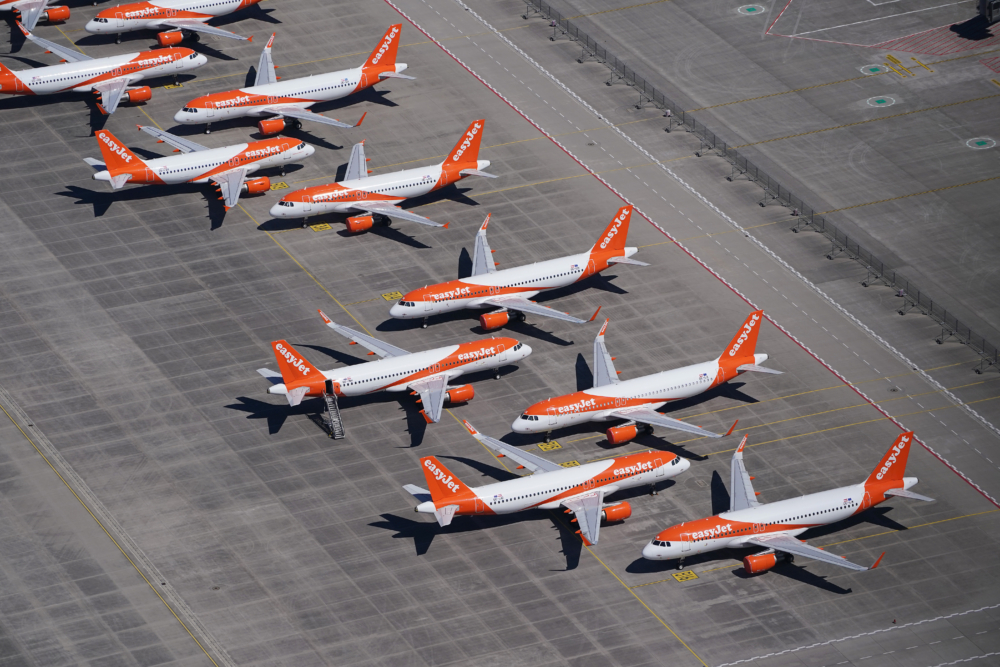easyJet has always been an interesting low-cost airline to observe because, unlike its competitors, it keeps a keen focus on primary airports. Other airlines opt to fly to further away, secondary airports, for the sake of cheaper landing fees. CEO Johan Lundgren explained that the easyJet strategy works best when it is a top airline at a primary airport.

Low-cost convenience at its heart
When easyJet was created, its founder had a vision of democratizing travel and making it possible for everyone to fly, not just the wealthiest. Speaking exclusively to Simple Flying, CEO Johan Lundgren noted that, on that front, the airline has kept its promise. He said,
“This has always been at the core of the easyJet strategy. easyJet that was built on the foundation to democratize travel. The founder set it up as a way to say that look, it can’t be right that this experience should only be there for rich and wealthy and privileged people. So as part of deregulation we started to offer flights that wouldn’t cost more than a pair of jeans and, by the way, jeans cost way more now than they did back then, so from a customer’s perspective we really kept our promise on that.”
For most low-cost airlines, part of the package of keeping costs low often means flying into secondary airports. These are sometimes rather far away from the cities they are tied with, leaving passengers with a long trek to get to the place they actually want to go. But, for the airline, this means cheaper fees, which it can then pass on to the passengers in the form of cheaper fares.

For easyJet, this has never been a focus. Lungren explained that the strategy was always to fly to a primary airport, noting,
“The other part of the core strategy was actually to fly at primary airports, and to have leading positions at primary airports. Our model works the best when we are number one or number two in the primary airport. We’re not interested in flying to airports you can’t pronounce; we’re not interested in flying to places where actually there’s nothing there apart from an airstrip on a field somewhere. That’s just not what we do, we fly into where people live.”
We’ve all experienced the frustration of being deposited at an airport that is not actually very close to where we wanted to go. Take Frankfurt Hahn as an example – it’s about an hour and a half from its namesake city. Oslo-Torp is about the same travel time from Oslo, while Paris Vatry is an incredible 131 miles from Paris, over two hours travel time.
Stay informed: Sign up for our daily and weekly aviation news digests.
300 million people within an hour
The benefit of being at primary airports is the large catchment area of people nearby. For easyJet, this is crucial to its strategy. Lungren explained,
“There are 300 million people across Europe that live within one hour’s drive from an easyJet airport. That’s a lot. So that’s what we decided early on that’s where our focus is going to be. Strategy is very much about making a choice, and we decided that the choice was going to be at these airports.”

In its end-of-year report in 2019, easyJet stated that 99% of its seat capacity was directed at key, primary airports. At the time, the airline was either number one or number two at 27 primary airports in Europe. In France, these included Nice, Lyon, Bordeaux, Lille and Grenoble, as well as a number two position in Paris Charles de Gaulle and Toulouse. In Italy, it was number one at Milan Malpensa, Venice, and Naples.
While it had already identified more airports where GDP and passenger volumes were high, COVID has put the brakes on expansion. Now, the airline has pulled out of some of its secondary airports, consolidating its position at the primary airports to weather the crisis.
But aren’t secondary airports cheaper?
The downside of operating from primary airports is the additional cost implication for this convenience. This has seen airlines like Ryanair targeting the airports with the lowest cost in order to keep its fares cheap. However, for easyJet, it has found an opportunity to offer more convenient flights while still keeping its costs down. Lundgren explained,
“We saw that there were a lot of inefficient legacy carriers operating at these airports. Highly costly and easy to compete with, and a number of these airports were also slot constrained. By building a strong position, we have a fantastic way of competing with inefficient airlines and making very good returns on that.
“When we have these positions, and we are at scale, we get efficiencies. When we do a lot of frequencies, our unit cost goes down. We get a strong presence and high awareness in the markets where we operate, so the cost of the acquisition of the customer also falls quite dramatically. So that’s where the model works, and this outweighs the disadvantage that these primary airports are also more expensive than some of these airfields that you can’t pronounce. We have a great opportunity to still to build on that.”

Through COVID, easyJet has further solidified its position at a number of primary airports. At Gatwick, for example, the airline acquired slots after the failure of Thomas Cook, and again as part of the development of Norwegian. It has upped its capacity there from 66 to 71 aircraft, and Lundgren is keen to add more if the opportunity arises. He said,
“We’re going to continue to look at gradually taking these positions as they become available, because the majority of our competition is still against the legacy carriers who are retrenching. That’s why this is a fantastic opportunity for us.”
What do you think of easyJet’s focus on primary airports?
from Simple Flying https://ift.tt/3fteExh
via IFTTT
Comments
Post a Comment